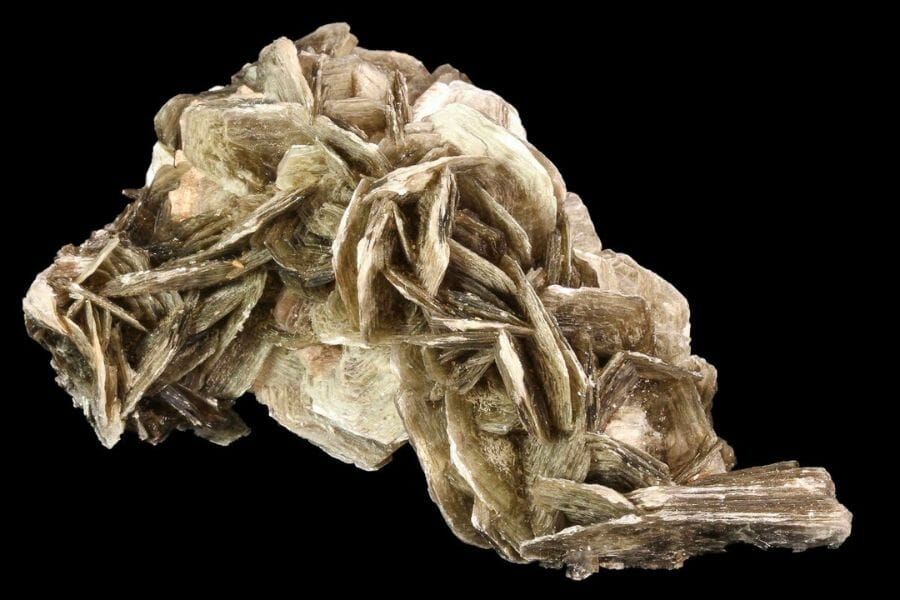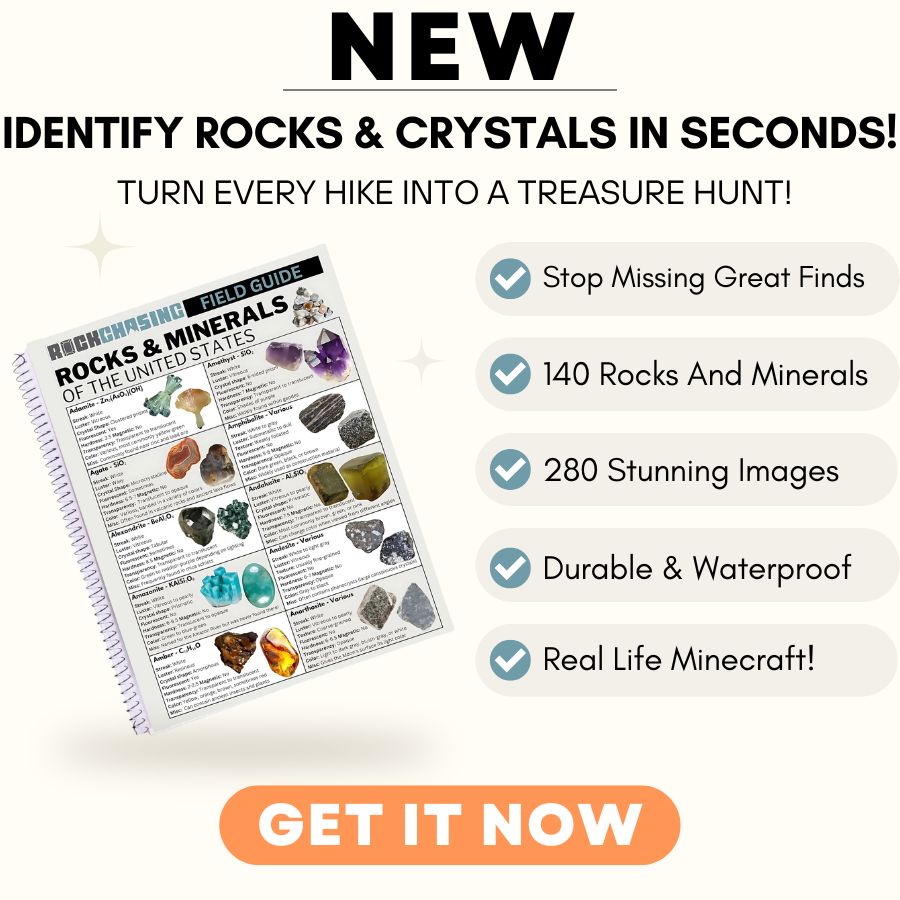Finding crystals can be a rewarding adventure, offering a unique way to explore the natural beauty and geology of the region. Whether you’re a seasoned rockhound or just getting started, knowing where to look is key to uncovering these hidden treasures.
In this state, a variety of locations provide opportunities to discover different types of crystals. From rocky outcrops in the mountains to stream beds that carry sparkling surprises, each area offers its own unique finds for those willing to search.
We can help you get started with some places you can explore for crystals below!
Crystals you can find in the US
The United States offers a wide range of crystals that reflect its diverse geology. From vibrant gems to more subtle mineral formations, there’s something to discover in nearly every region.
Calcite
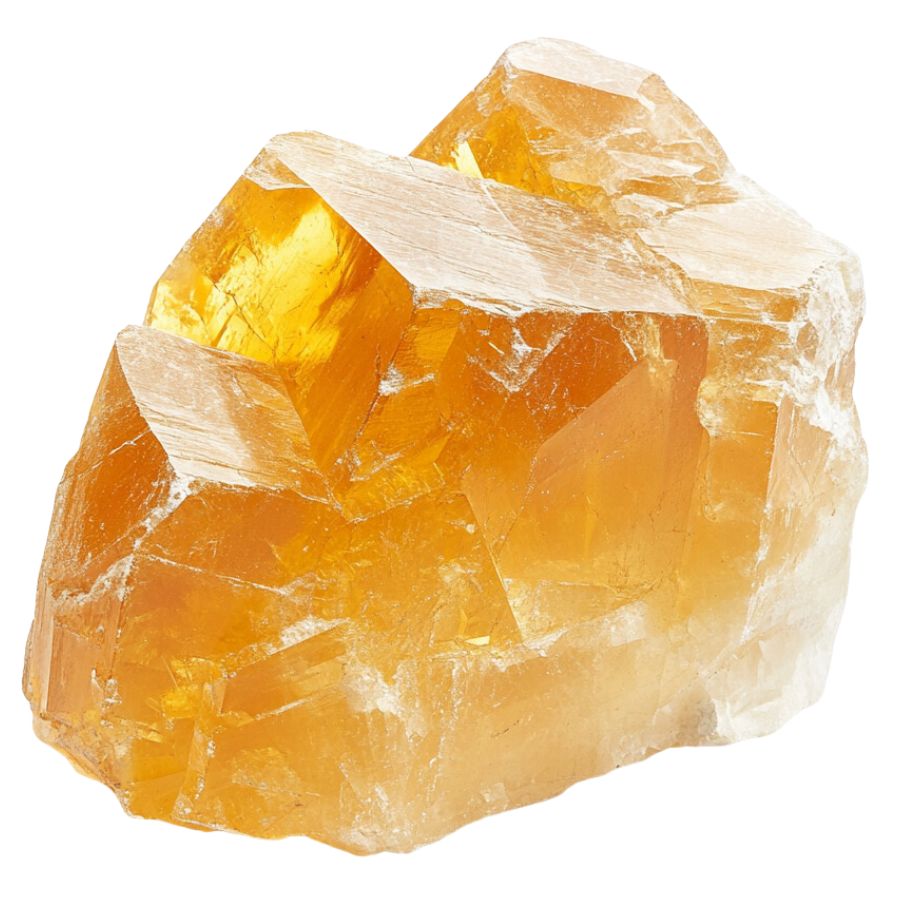
With a variety of forms and a unique property of double refraction, calcite allows objects viewed through the crystal to appear doubled. This mineral can appear in a spectrum of colors, with pure forms typically being transparent or white.
In addition, calcite reacts vigorously with acids, which aids in distinguishing it from other minerals. It also frequently contributes to the structure of sedimentary rocks such as limestone.
Gypsum
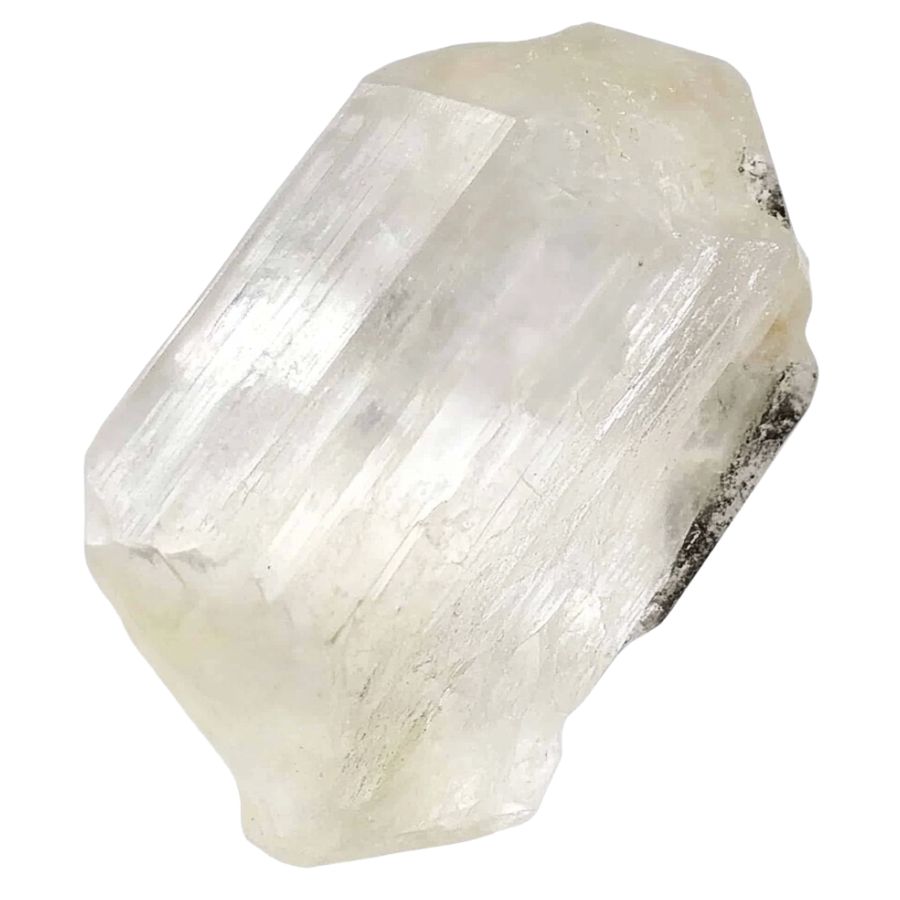
Gypsum’s notable softness allows it to be easily scratched with just a fingernail, often presenting as white or very light-colored in its pure form.
It manifests in both crystalline forms, like selenite, and massive forms such as alabaster, making it versatile in use and appearance.
Gypsum is also essential in the construction industry and is a key component in the manufacture of plaster and drywall.
Fluorite
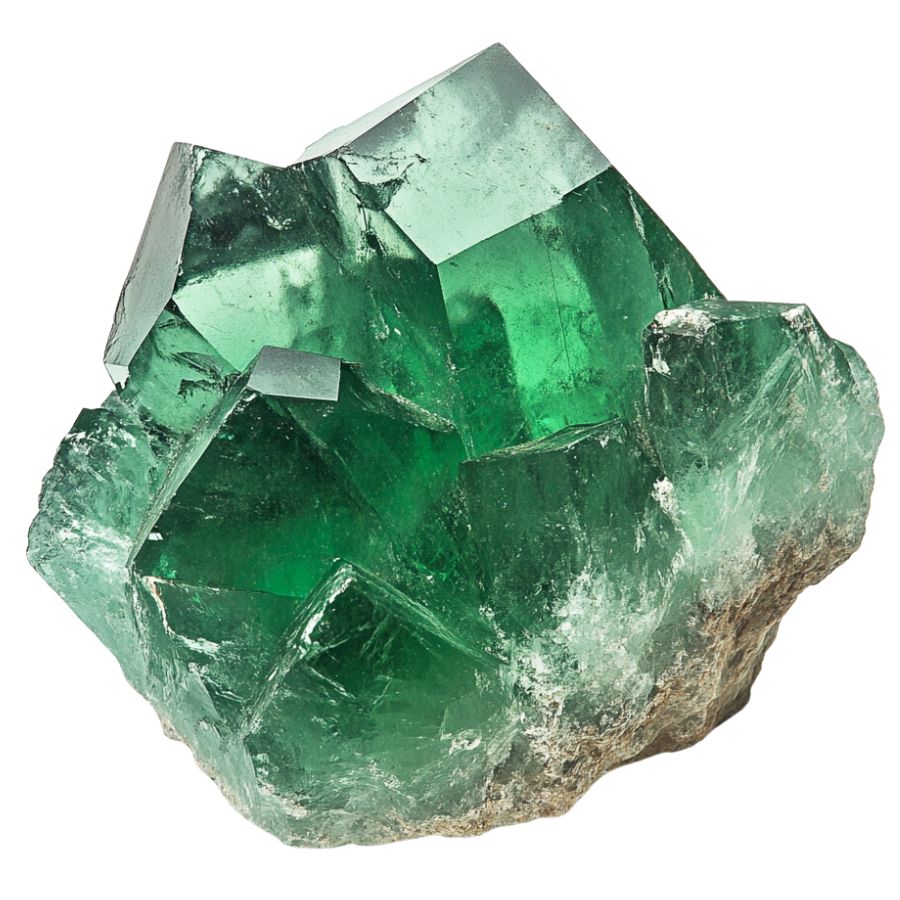
Fluorite comes in a wide range of vibrant colors, including purples, greens, blues, and yellows, and is known for forming in well-defined cubic crystals.
Beyond this, fluorite exhibits fluorescence under ultraviolet light! It can also be used in various industrial applications, including as a flux in steelmaking.
Galena
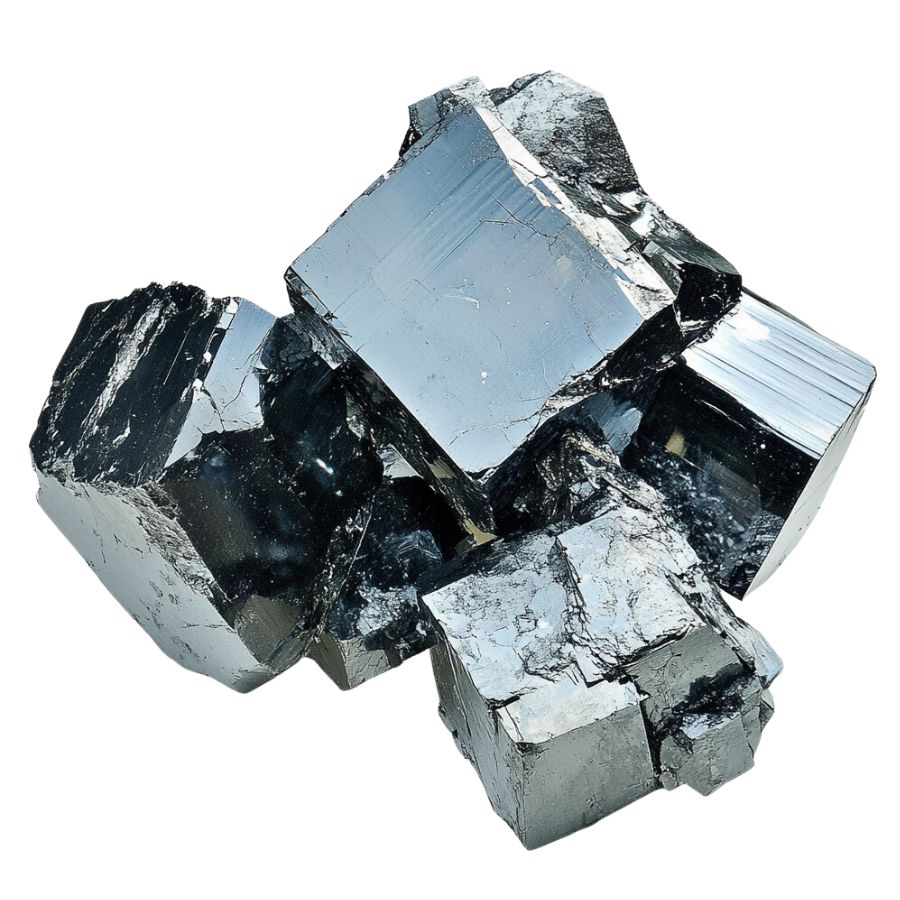
Galena distinguishes itself with a metallic luster and high density, typically found in a cube-like form. It serves as the primary ore of lead, making it important in the metal industry, while its shiny, silver color attracts collectors.
Not only does its appearance make it a subject of interest, but its weight and texture provide tangible lessons in mineral density and metallic properties. Galena also often contains traces of silver, adding to its commercial and educational value.
Corundum
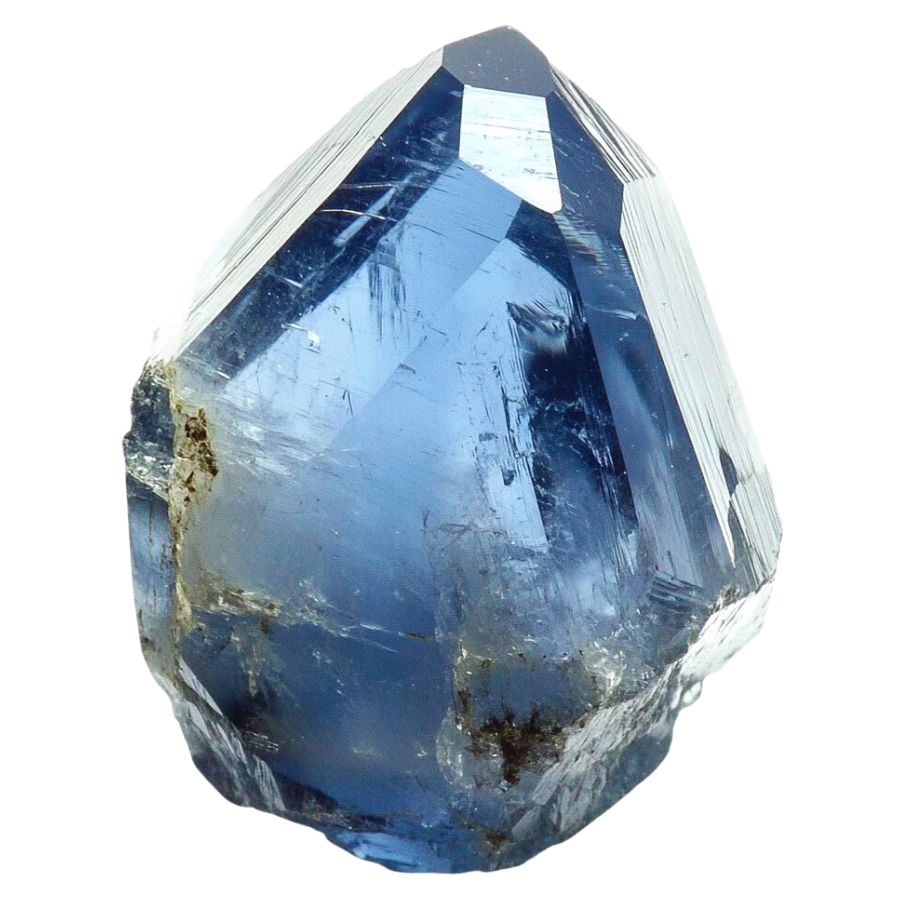
Corundum is a mineral that comes in a variety of colors, though it is typically transparent or gray. Its most famous forms are sapphires and rubies, which are prized for their vibrant blue and red hues.
The mineral is known for its remarkable hardness, ranking just below diamond on the Mohs scale. This durability makes corundum ideal for industrial abrasives and cutting tools, as well as a popular choice for fine jewelry.
Quartz
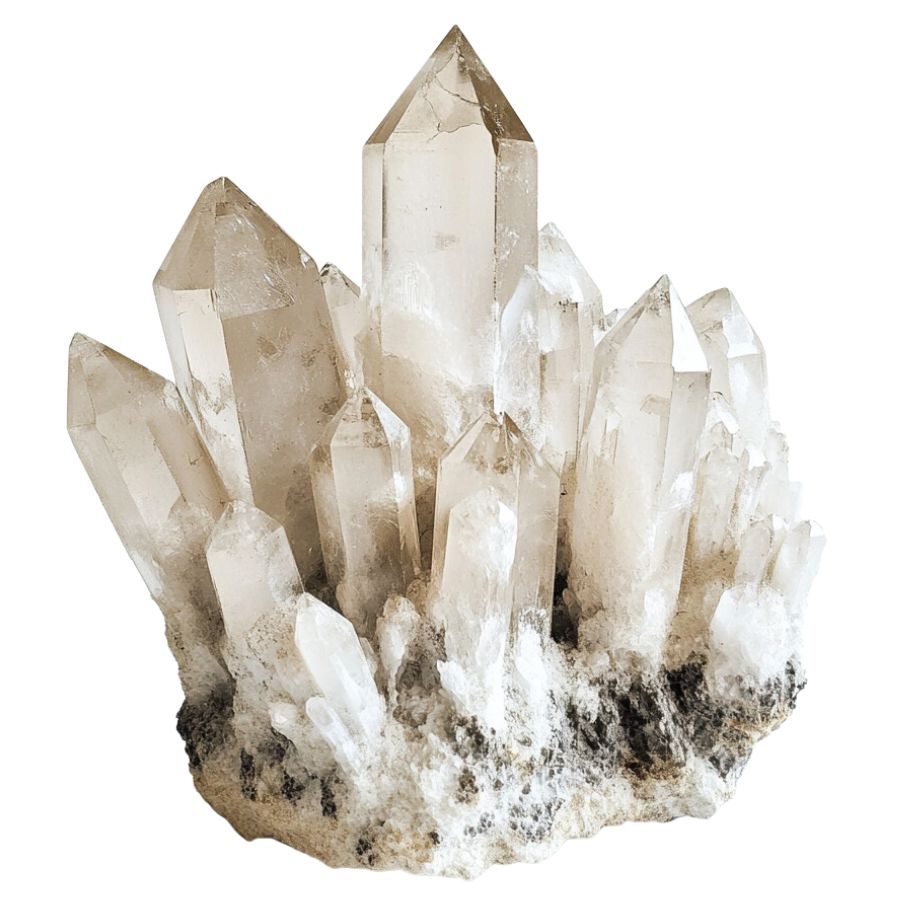
Quartz is among the most common minerals in the Earth’s crust and is prized for its durability and variety. It forms in a wide range of colors and types, from clear rock crystal to purple amethyst.
The mineral is notable for its hardness and durability, which contribute to its use in a variety of applications. Quartz is also popular in the manufacturing of electronics and watches due to its piezoelectric properties, which allow it to convert mechanical pressure into electrical energy.
Pyrite
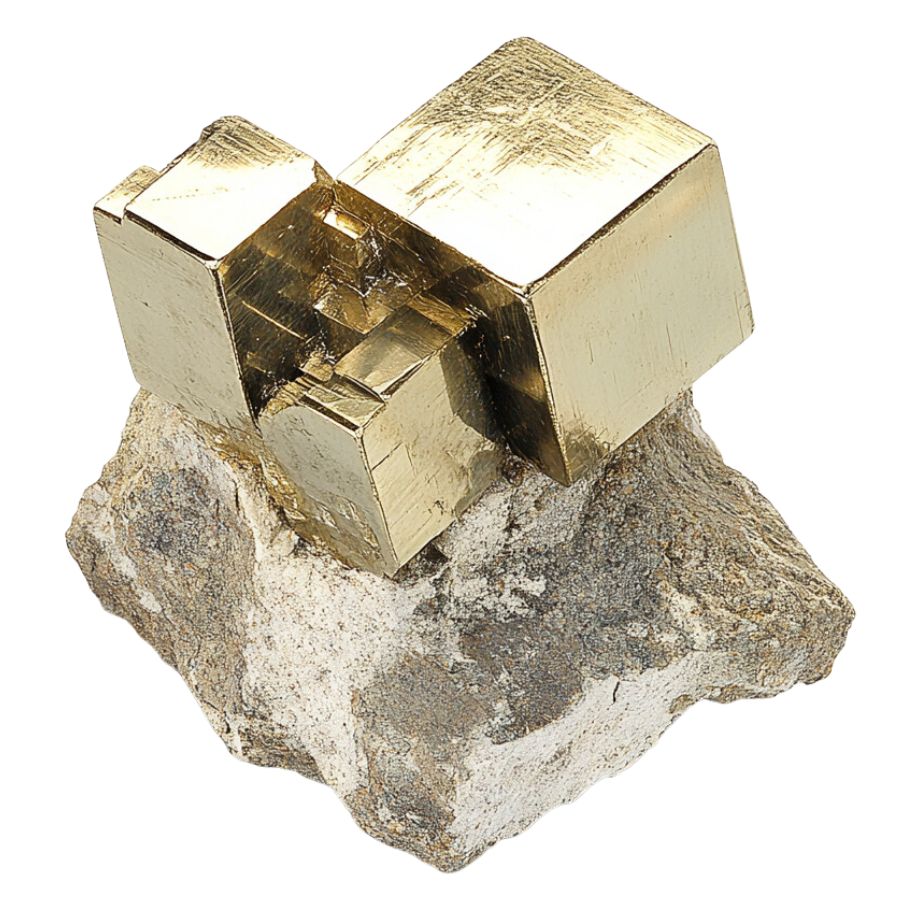
Often mistaken for gold due to its metallic luster and pale brass-yellow hue, pyrite is known colloquially as “fool’s gold.” Its characteristic cube-shaped crystal formations look man-made but are actually completely naturally formed!
Pyrite also has historical importance in producing sulfur dioxide for sulfuric acid production.
Rhodochrosite
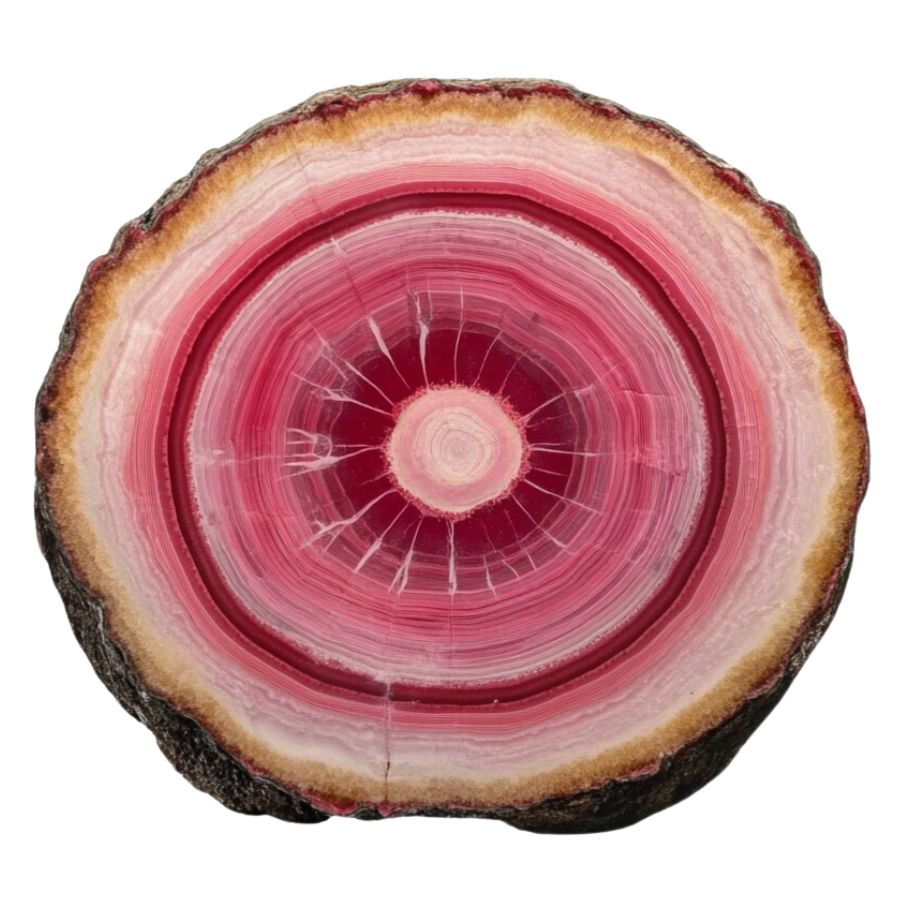
Rhodochrosite stands out with its rich pink and red hues, making it highly desirable as both a mineral specimen and a gemstone.
It typically forms in layered or stalactitic structures, with bands of colors that showcase how it grew over millions of years.
Beyond its beauty, rhodochrosite is significant as the main source of manganese, an essential element used in metal alloys.
Rhodonite
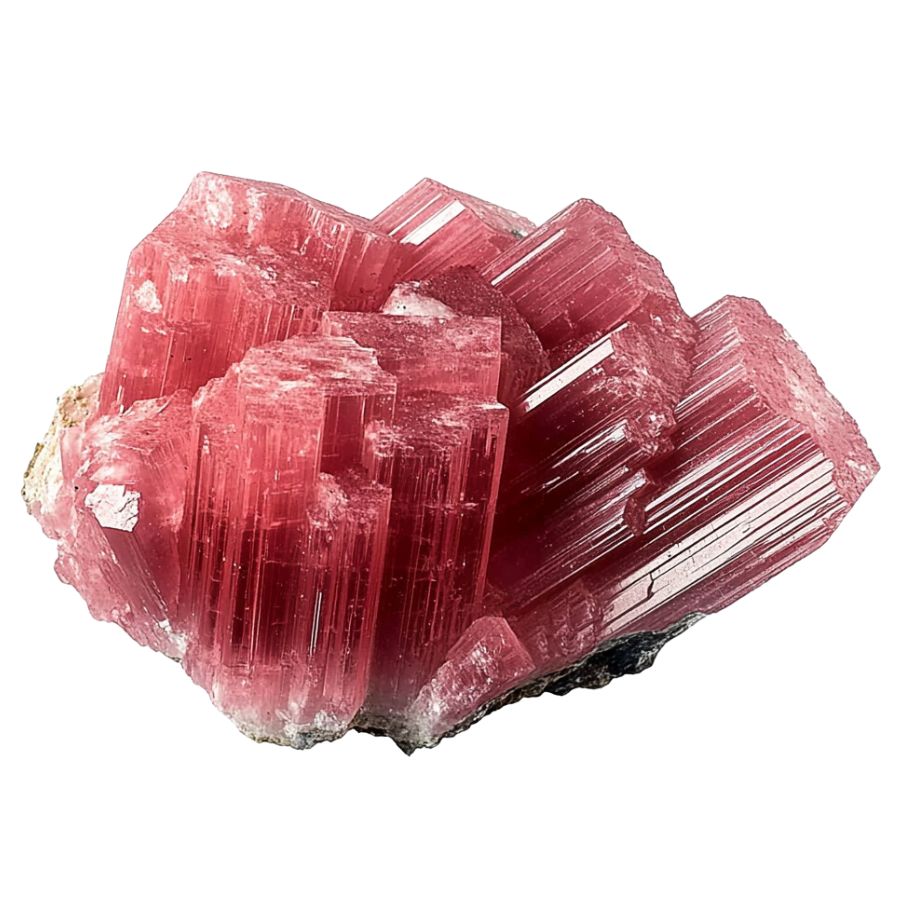
Appreciated for its deep pinks and reds, often complemented by black manganese oxide veins, rhodonite presents a dramatic appearance. It is typically found in metamorphic rocks and is used both as an ornamental stone and in jewelry.
In geology, rhodonite is significant for its role in metamorphic processes and its association with other manganese-rich minerals. It can be found in metamorphosed sedimentary rocks and is sometimes used as an indicator of the presence of manganese deposits.
Vivianite
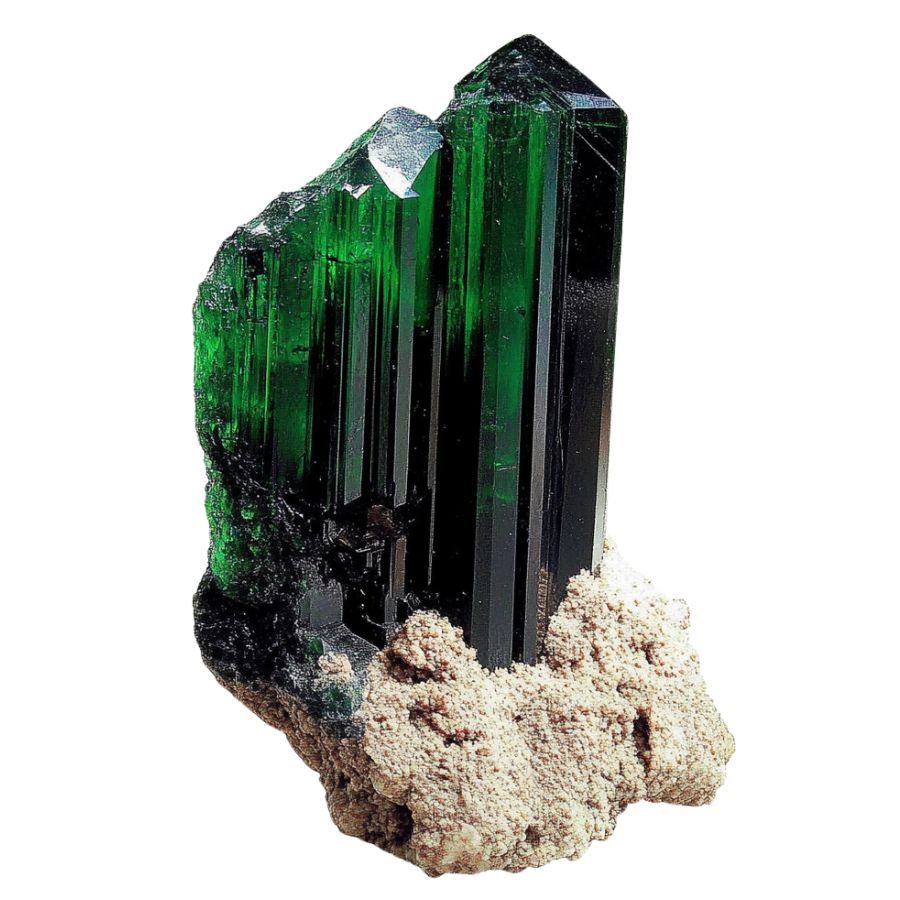
Vivianite, an iron phosphate mineral, emerges in low-oxygen environments like peat bogs or iron-rich deposits. Its striking blue to green color, which can change to a lighter shade over time due to oxidation, makes it a distinctive mineral.
Found in various geological settings, vivianite provides clues about the local conditions and the presence of phosphate deposits.
The Types of West Virginia Crystals You Can Find
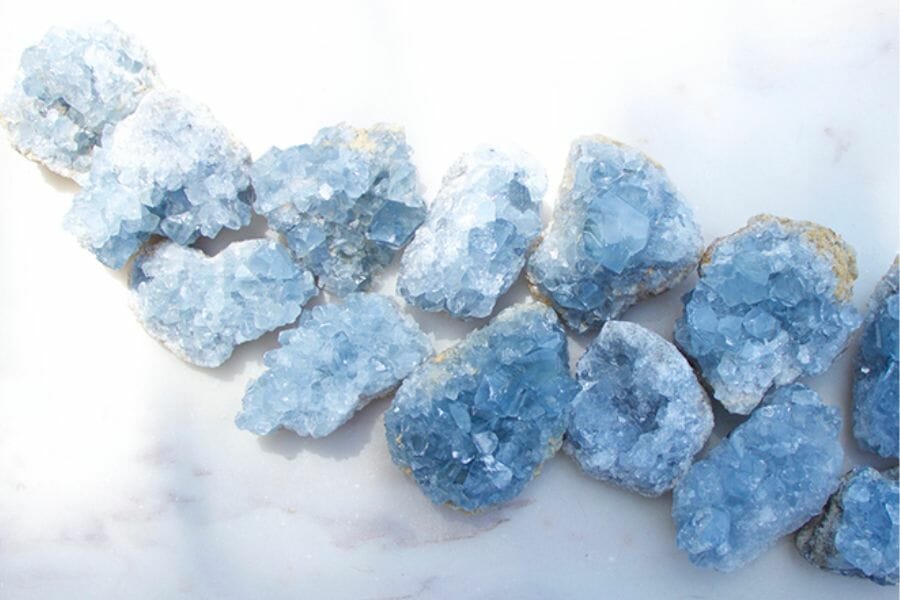
Known for its abundance of crystals, West Virginia has a rich history of crystal hunting and mining. And one of the most fascinating aspects of the crystals found here is their diversity. They can be found in a range of colors, from clear and white to pink, green, and purple, and can even have iridescent or metallic sheens that make them especially striking. Some of the most popular types of crystals found here are the following:
Rare crystals found in West Virginia
- Celestite
- Muscovite
- Opal
- Selenite
More common crystals found here
- Agate
- Calcite
- Chalcedony
- Diamond
- Fluorite
- Galena
- Hematite
- Jasper
- Onyx
- Pyrite
- Quartz
- Tourmaline
What rough crystals look like
When you’re out looking for crystals on your own it’s important to know what you’re looking for. This is what you need to look out for:
Look for exteriors like this
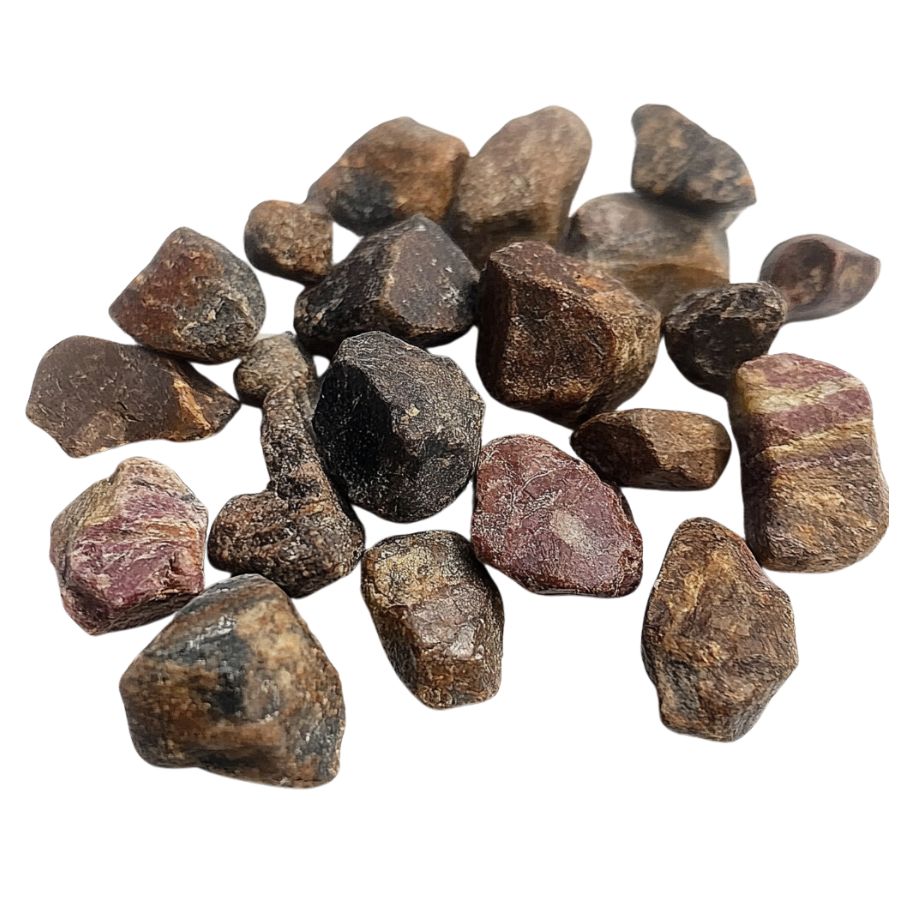
When you’re out searching for crystals in the wild, it’s essential to keep in mind that what you find won’t look like the polished stones you see in stores. One important tip is to consider what certain crystals look like in their raw, natural form.
Without the shine and smooth finish, crystals might appear rough, with jagged edges or earthy tones masking their true beauty. Understanding this can help you spot potential finds that might otherwise be overlooked.
Examine the crystal structure and shape
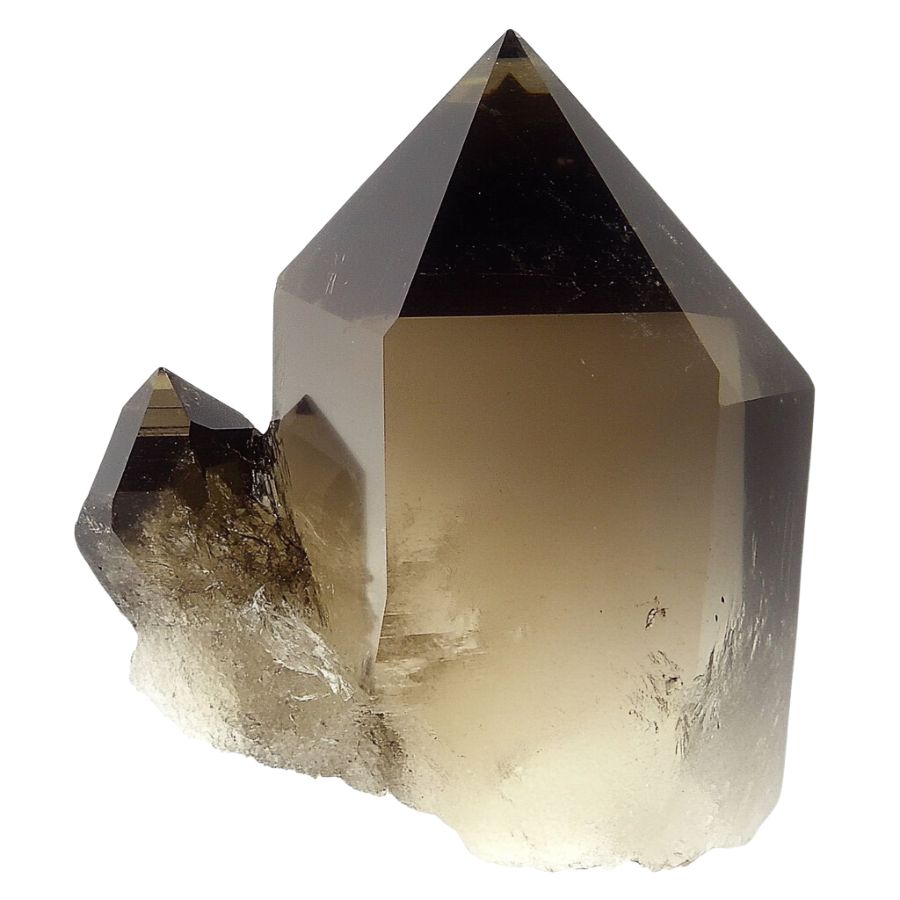
Crystals often form in specific geometric patterns that can be key to identifying them. For example, quartz is known for its hexagonal prisms, while halite typically forms cubic shapes.
By recognizing these distinct patterns, you can differentiate between various types of crystals and better understand what you’ve found.
Observe color
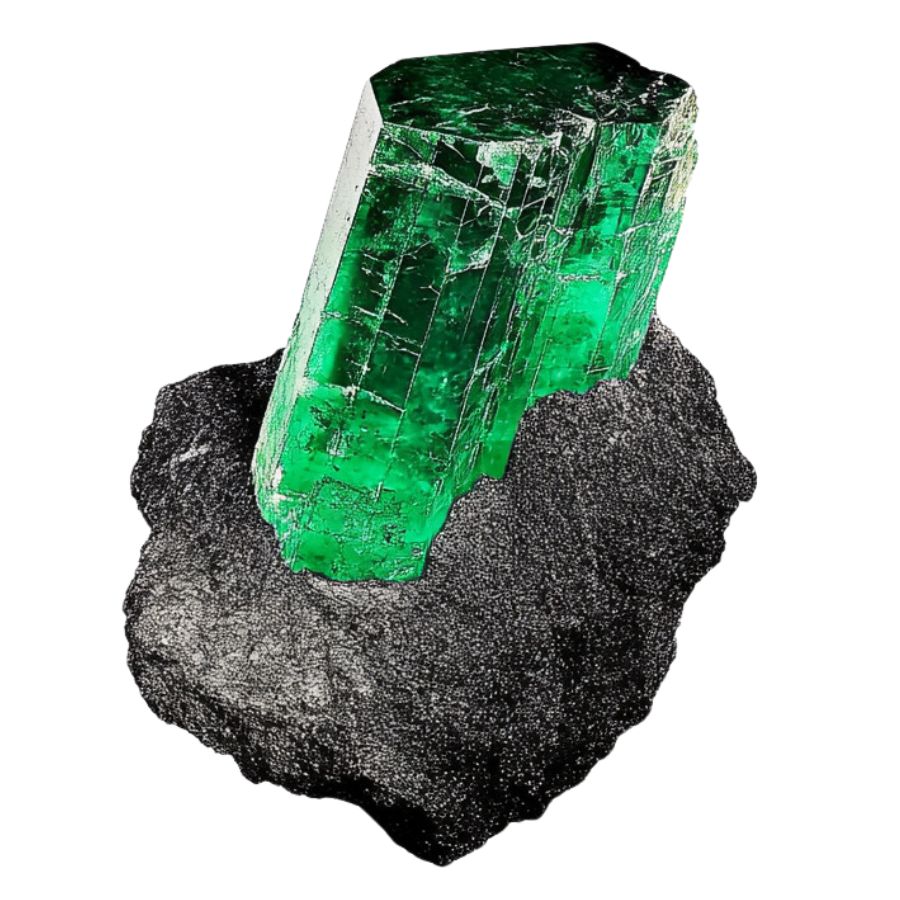
Some crystals are known for their distinct hues, like the deep purple of amethyst or the vibrant green of emerald. However, not all crystals will have strong colors; some may be clear or only slightly tinted.
Check the luster
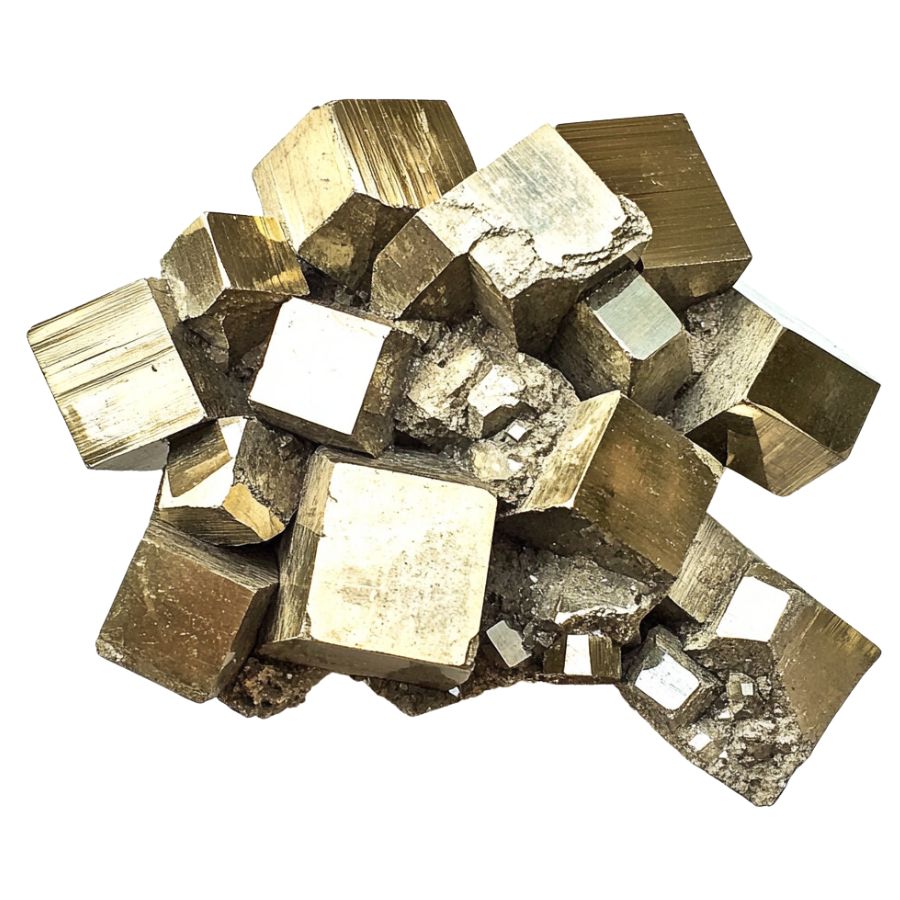
Luster refers to how a crystal’s surface interacts with light. Some crystals might have a shiny, glassy luster, while others may appear metallic or dull. This characteristic can help you determine the type of crystal you’ve found.
However, it’s important to remember that luster isn’t always obvious right away. In some cases, a crystal’s true luster will only become apparent after it’s been cleaned or polished, so keep this in mind as you examine your finds.
Evaluate the transparency
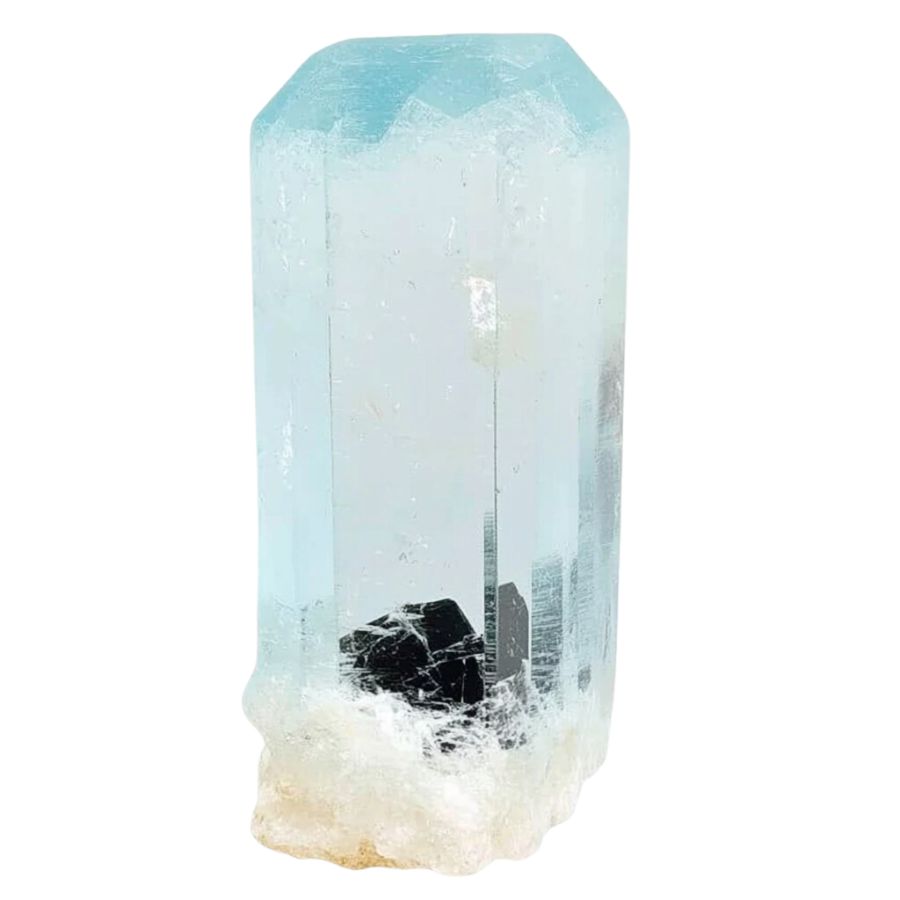
Pay close attention to how much light passes through the crystal. Some crystals are completely clear, allowing light to pass through easily, while others may be opaque and block light entirely.
You might also encounter crystals with translucent edges but opaque centers. These variations in transparency can offer valuable clues about the type of crystal you’ve found, making it easier to identify and appreciate your discovery.
A Quick Request About Collecting
Always Confirm Access and Collection Rules!
Before heading out to any of the locations on our list you need to confirm access requirements and collection rules for both public and private locations directly with the location. We haven’t personally verified every location and the access requirements and collection rules often change without notice.
Many of the locations we mention will not allow collecting but are still great places for those who love to find beautiful rocks and minerals in the wild without keeping them. We also can’t guarantee you will find anything in these locations since they are constantly changing.
Always get updated information directly from the source ahead of time to ensure responsible rockhounding. If you want even more current options it’s always a good idea to contact local rock and mineral clubs and groups
Tips on where to look
Having a better idea of where to look can greatly narrow down your search and increase your chances of finding crystals. By focusing on environments where crystals are likely to be exposed, you can spend less time searching and more time discovering.
Outcrops and Exposed Rock
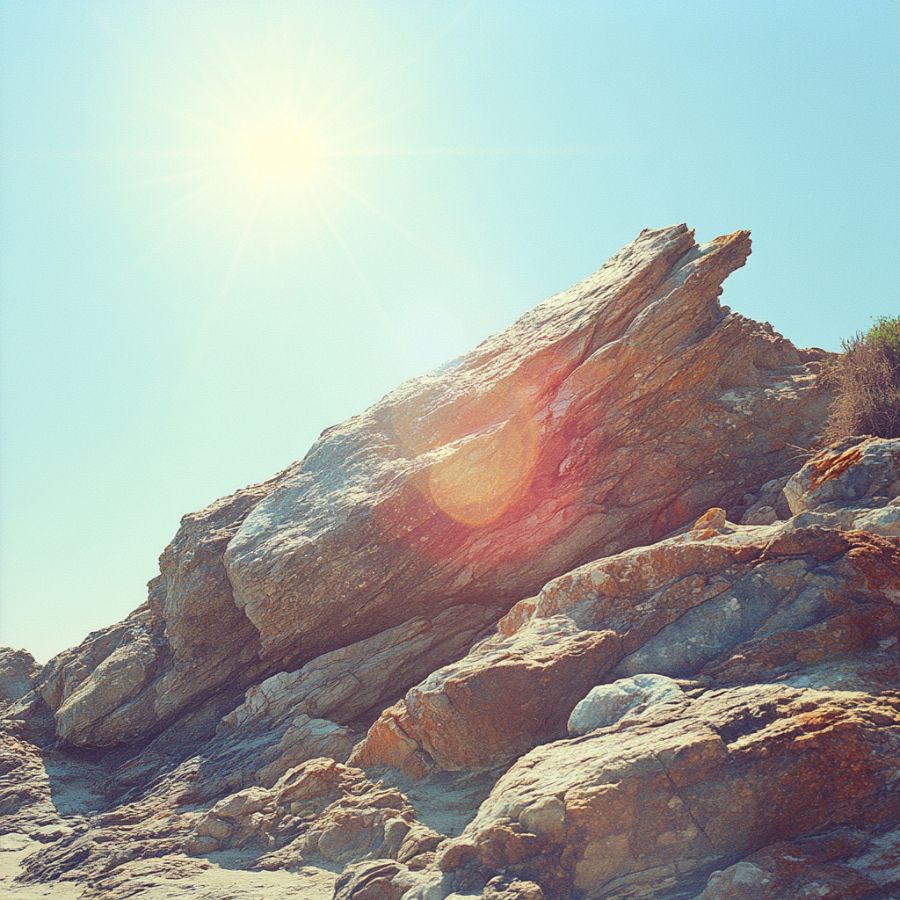
Rocky outcrops are prime locations for finding crystals and minerals. Search along the edges of outcrops, particularly where erosion has worn away the surrounding soil, revealing the rock underneath.
Pay close attention to any visible cracks, crevices, or small cavities within the outcrop, as these are often where crystals develop and can be extracted with minimal effort.
Stream Beds and Gravel Deposits
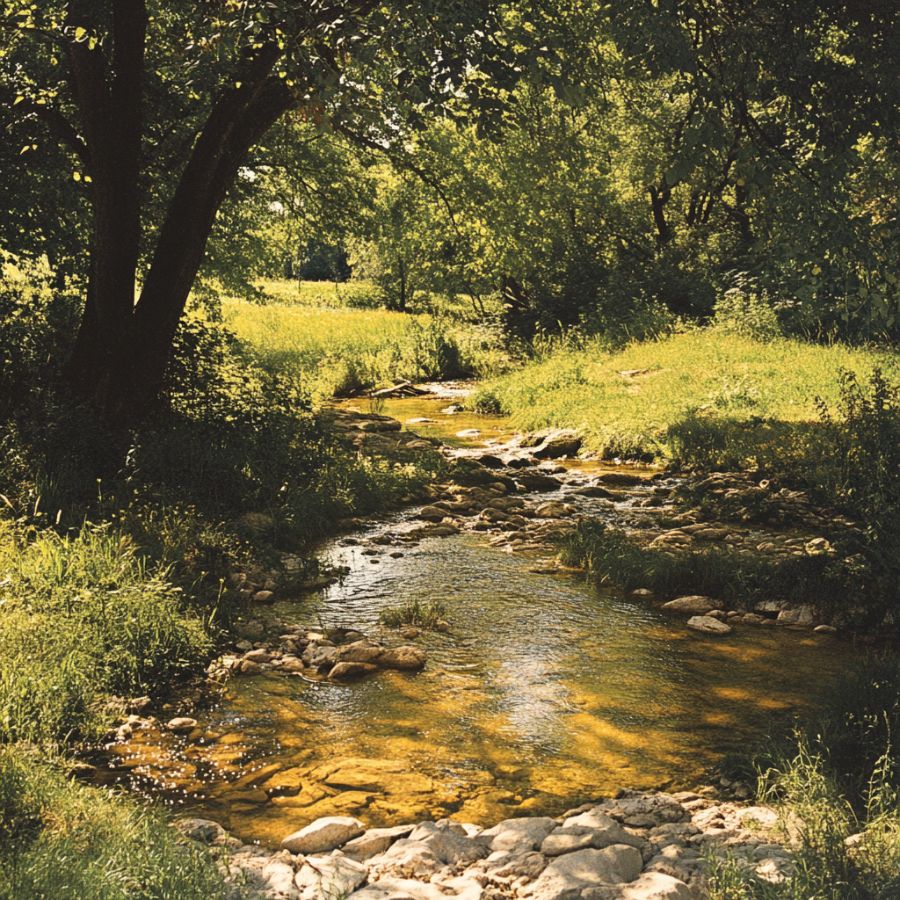
Stream beds are dynamic environments where water flow constantly shapes the landscape. Over time, water can erode rocks upstream, breaking them down and carrying mineral fragments, including crystals, downstream.
When searching in these areas, look for spots where the current has slowed, such as bends in the stream or areas behind large rocks, as these are prime locations for deposits.
Quarries and Mines
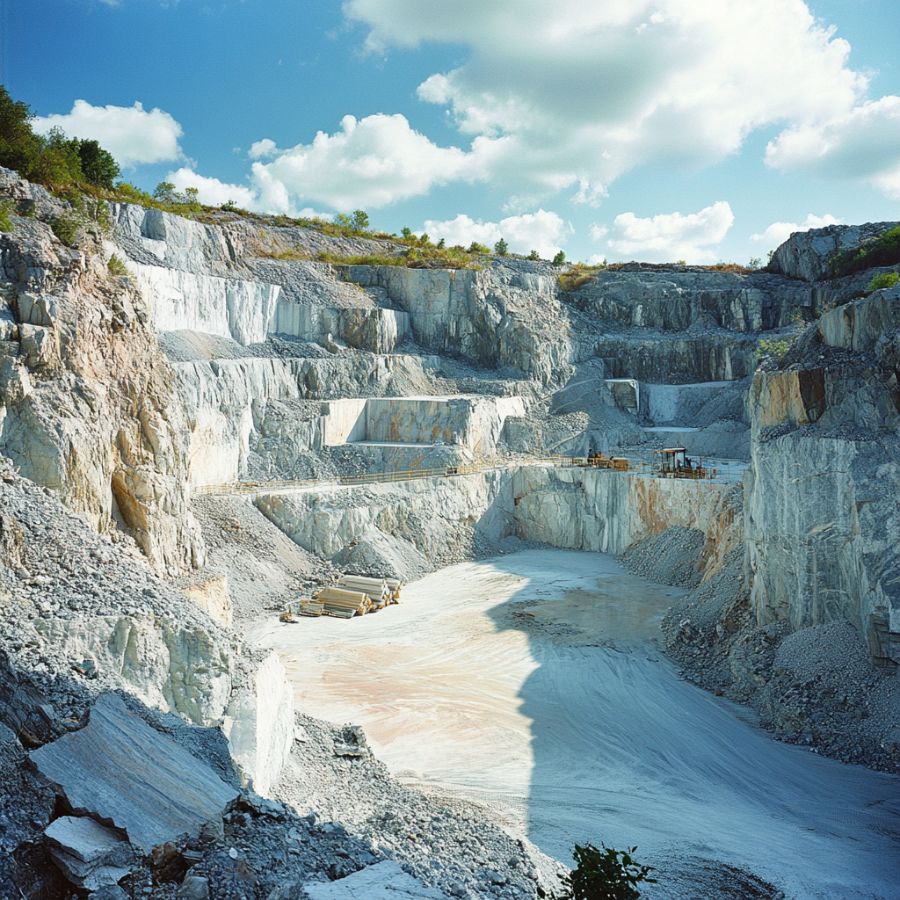
Quarries and mines are excellent places to search for crystals because they expose deep layers of rock that would otherwise be hidden beneath the surface. These sites often contain a variety of minerals and crystals that have been brought to the surface during excavation.
Pay attention to tailings piles, where waste rock is discarded, as they often contain overlooked or broken crystals. Always prioritize safety when exploring these areas and ensure that you have permission to search.
Road Cuts and Construction Sites
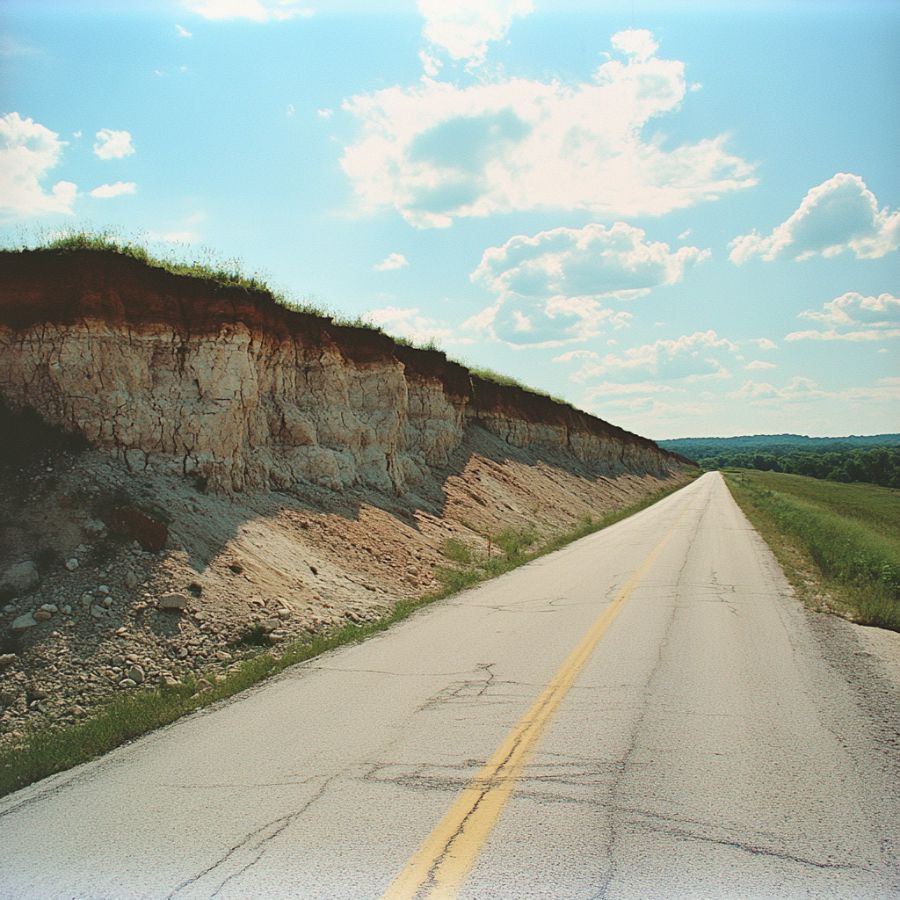
As roads are cut through hillsides or construction projects dig deep foundations, layers of rock and soil that have been undisturbed for millions of years are suddenly exposed.
Look for freshly exposed rock faces, especially where blasting has occurred, as this can create fissures or expose pockets filled with crystals. Be cautious around active construction sites, and always seek permission before exploring.
Mountainous Areas
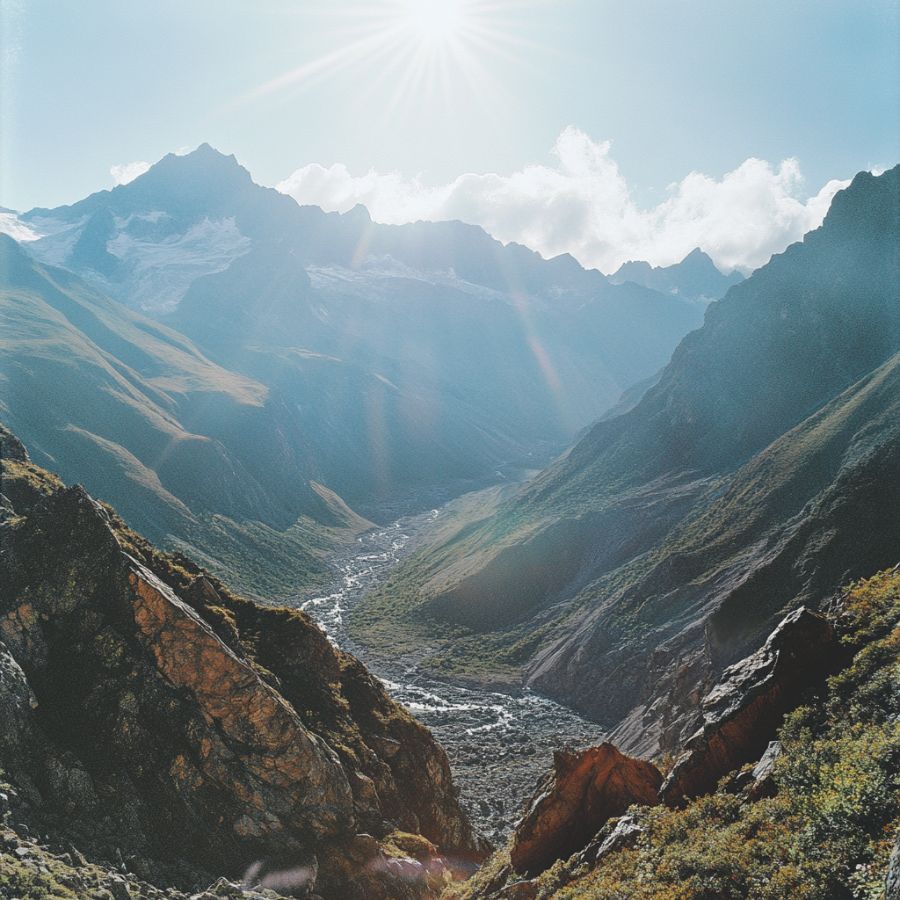
In mountainous regions, erosion caused by wind, rain, and ice can wear away the softer rock, exposing harder crystals that have formed within. Focus on weathered and broken rock formations.
Look for scree slopes, where loose rock has accumulated at the base of cliffs. Additionally, areas near fault lines or volcanic vents are particularly promising, as they often have a higher concentration of minerals.
DON'T MISS OUT ON ANY GREAT FINDS!
While you're out searching for Crystals you're going to find A LOT of other interesting rocks and minerals along the way. The last thing you want to do is toss out something really interesting or valuable. It can be easy to misidentify things without a little guidance.
We've put together a fantastic field guide that makes identifying 140 of the most interesting and valuable rocks and minerals you will find REALLY EASY. It's simple to use, really durable, and will allow you to identify just about any rock and mineral you come across. Make sure you bring it along on your hunt!
West Virginia Crystal Mining Laws And Regulations
It’s legal to engage in crystal mining here in West Virginia for as long as you do it in observance of our local laws, especially those imposed by the West Virginia Department of Environmental Protection (WVDEP) and the Office of Abandoned Mine Lands and Reclamation.
Primarily, secure any necessary permits or permission, depending on the type of land you’ll explore, before you start your activity. Secondly, be aware of rules and regulations meant to protect the environment or biodiversity of the area.
By complying with these laws, you are helping ensure the sustainability of crystal mining for many years.
- The extensive local experience and understanding of our team
- Input from multiple local crystal hunters and crystal collecting groups
- The accessibility of the crystal mining locations
- Safety and potential hazards when collecting
- Private and public locations
- A desire to include locations for both experienced crystal hunters and those who are just starting out
Using these weights we think we’ve put together the best list out there for those who love finding new crystals for our collections!
The Best Locations For Crystal Mining in West Virginia
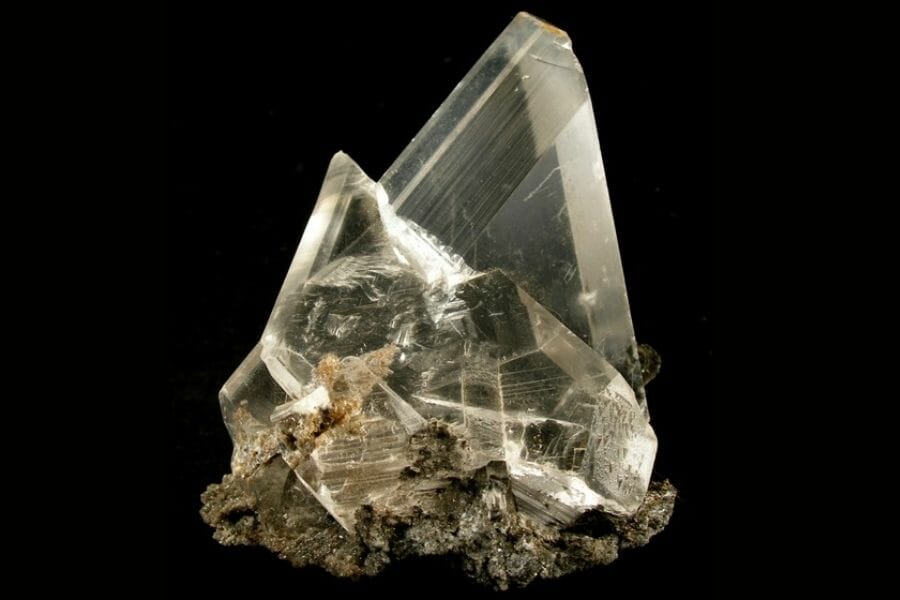
Here are the most amazing places that you can visit to find crystals in West Virginia. We had the most success here and we’re hoping you will, too!
Always Confirm Access and Collection Rules!
Before heading out to any of the locations on our list you need to confirm access requirements and collection rules for both public and private locations directly with the location. We haven’t personally verified every location and the access requirements and collection rules often change without notice.
Many of the locations we mention will not allow collecting but are still great places for those who love to find beautiful rocks and minerals in the wild without keeping them. We also can’t guarantee you will find anything in these locations since they are constantly changing.
Always get updated information directly from the source ahead of time to ensure responsible rockhounding. If you want even more current options it’s always a good idea to contact local rock and mineral clubs and groups
Knobly Mountain is Our Favorite Crystal Mine in West Virginia
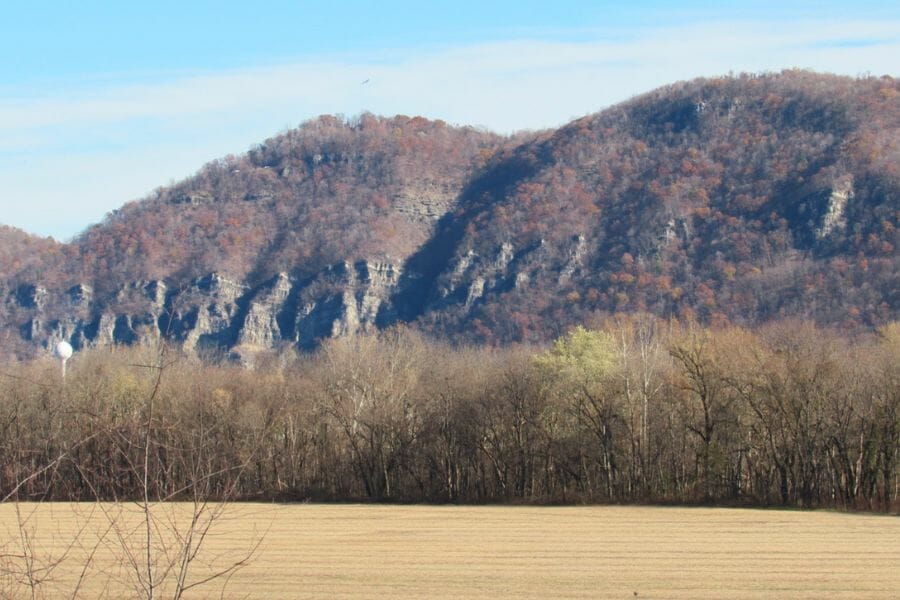
Mineral County, WV1
Located in the eastern part of the state, Knobly Mountain is a long ridge that stretches for over 30 miles. The mountain has a rich history, as it was once home to several mining communities that operated in the early 1900s. Today, it’s a popular spot for outdoor enthusiasts, hikers, and of course, rockhounds looking for some amazing crystals. It’s even an amazing place to find West Virginia gems!
Knobly Mountain is composed of sedimentary rocks that date back to the Paleozoic era, which means there are plenty of opportunities to find different crystals that are associated with these rocks. The diverse geology of the area means that there are a variety of crystal formations to be found here, including clusters, druses, and geodes.
To get here, start in the town of Keyser and head east on Route 46. There are several spots along the way where you can park and explore the mountain on foot. It’s also worth noting that there are several creeks and streams in the area, which can be great spots to find crystals that have been eroded from the mountain.
Where we found crystals at Knobly Mountain
To find crystals here, explore the east face outcrops and old quarries of Knobly Mountain. Here, you can get your hands on beautiful samples of Chalcedony, Calcite, Fluorite, and Quartz crystals. You can also search through the mountain’s west face, where you can find Celestite (blue) and Calcite (blue) crystals.
DON'T MISS OUT ON ANY GREAT FINDS!
While you're out searching for Crystals you're going to find A LOT of other interesting rocks and minerals along the way. The last thing you want to do is toss out something really interesting or valuable. It can be easy to misidentify things without a little guidance.
We've put together a fantastic field guide that makes identifying 140 of the most interesting and valuable rocks and minerals you will find REALLY EASY. It's simple to use, really durable, and will allow you to identify just about any rock and mineral you come across. Make sure you bring it along on your hunt!
Berkeley Springs
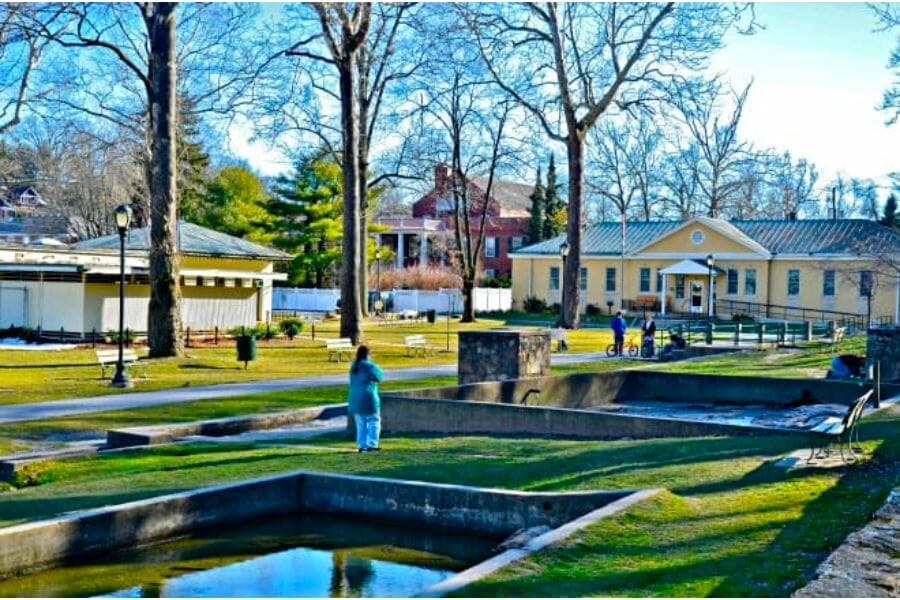
Morgan County, WV
Berkeley Springs is a charming small town in the eastern part of our state, known for its natural hot springs and rich history dating back to colonial times. But what many people don’t know is that the area is also a great place to find some beautiful crystals.
The geology of this town is quite diverse, with a mix of sedimentary, metamorphic, and igneous rocks. This makes for a wide variety of crystal formations, and the best part is, many of them can be found right on the surface, without any need for digging.
If you’re planning to visit, the town is easily accessible by car from several major cities in the region. Simply take Interstate 81 to exit 13 and follow the signs to the town. There are several public parking areas in town, like at the Cacapon State Park.
Where we found crystals at Berkeley Springs
You can find stunning samples of Calcite, Jasper, Pyrite, Quartz, and Selenite crystals in the area quarries of Berkeley Springs. Know more about these crystals’ value by reading our guide.
South Fork Mountain
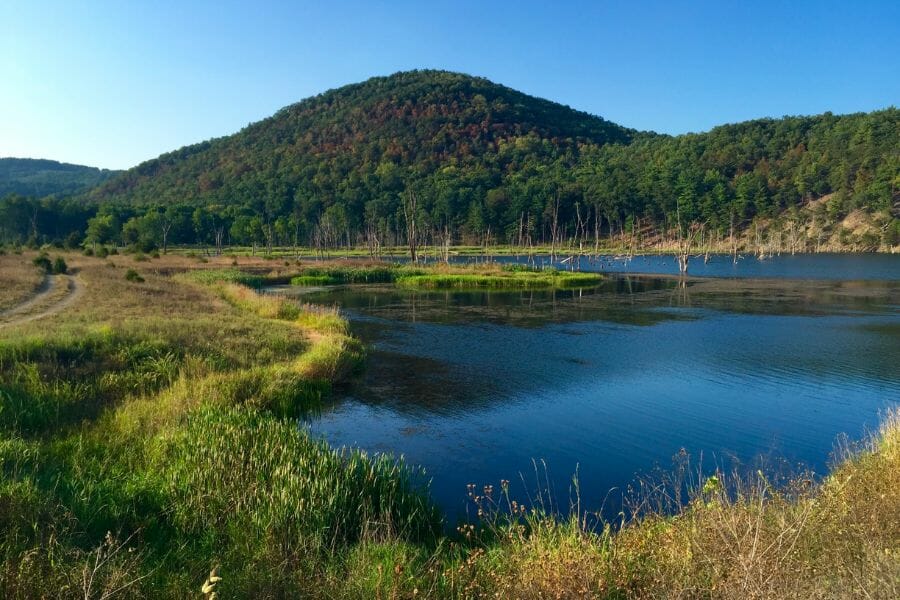
Grant County, WV
Located in the eastern part of West Virginia, South Fork Mountain is a beautiful and rugged area known for its stunning views and unique geology. The mountain is home to a wide variety of crystals, making it a popular destination for rock collectors and enthusiasts.
The history of this mountain is tied to the logging industry that once dominated the area. It was heavily logged in the early 20th century, and as a result, there are many old logging roads and trails that wind through the forested hillsides. These roads and trails provide access to some of the best crystal hunting spots on the mountain.
South Fork Mountain is a mix of sedimentary and metamorphic rocks, including shale, sandstone, and quartzite. This diverse geology has resulted in a wide variety of crystal formations.
Planning your visit here? Take Interstate 64 to exit 156, and then follow Route 219 south for approximately 15 miles. Turn right onto South Fork Road, and follow the road until you reach the parking area at the base of the mountain. From there, you can hike up to the crystal hunting spots along the logging roads and trails.
Where we found crystals at South Fork Mountain
We highly recommend exploring the area prospects of South Fork Mountain where you can find some of the most beautiful samples of Hematite crystals in our state.
New Creek
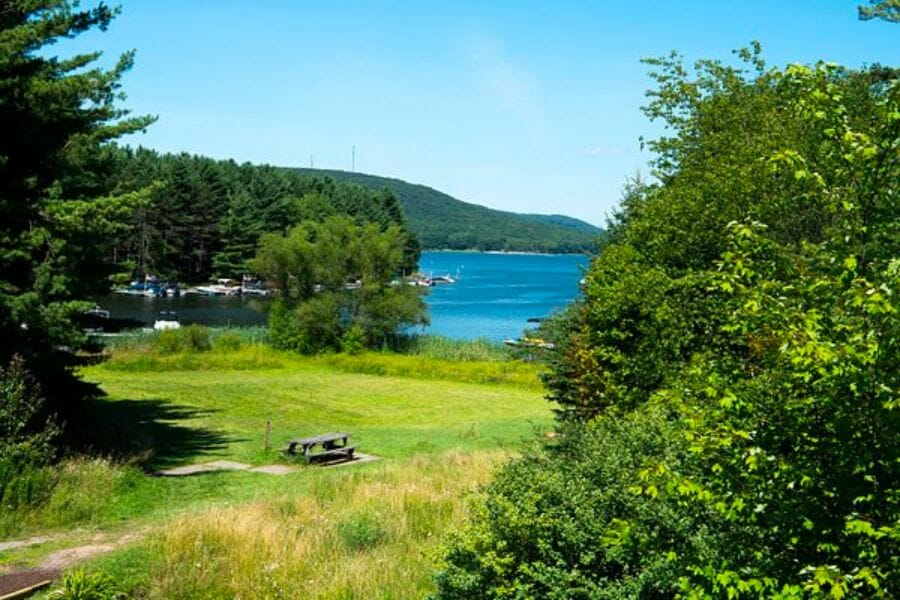
Mineral County, WV
New Creek is a small community nestled in the rolling hills of Mineral County. It has a rich history of mining and mineral exploration, dating back to the mid-1800s.
New Creek is named after the creek that runs through the area, which was a popular spot for gold panning in the 19th century. Its geology is a mix of sedimentary and igneous rocks, and the area is rich in minerals and crystals.
To get here, take US Route 50 to the town of Keyser, and then follow Route 220 south for approximately 7 miles. Turn right onto Route 956, and follow the road until you reach the small community of New Creek. There are several public access points along the creek and surrounding hillsides where you can begin your crystal hunting adventure.
Where we found crystals at New Creek
If you visit here, explore the quarry and mine prospects between US 50 AND US 220, where you can find samples of Calcite and Hematite crystals.
Judy Gap
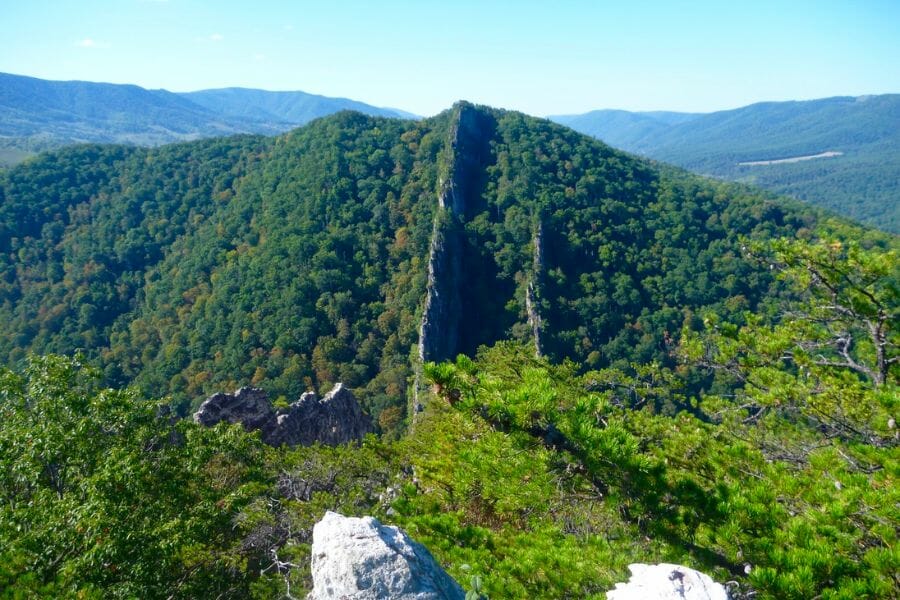
Pendleton County, WV
Judy Gap is a small community located in the Allegheny Mountains. It has a rich history of mineral exploration and extraction, with mining operations dating back to the mid-19th century. The town itself was named after a nearby gap in the mountains that was used as a passage by early settlers.
If you want to go crystal hunting here, there are several great spots to explore, like the “Quartz Hill” area, which is located on the north side of Route 33. Here, you can find Quartz crystals in a variety of formations. You can also explore the “Bucktail Mine” area, which is located off of Route 28, where you can find Quartz and Calcite crystals.
To get here, take Route 33 east from Elkins. Once you reach the town of Harman, turn south onto Route 32/1 and continue until you reach the town of Dry Fork. From there, take Route 28 south for approximately 8 miles until you reach Judy Gap.
Where we found crystals at Judy Gap
We had the best time and success exploring the area outcrops and gravels of Judy Gap. Here, you can find stunning samples of Calcite and Quartz crystals.
Our Other Favorite Places For Crystal Hunting
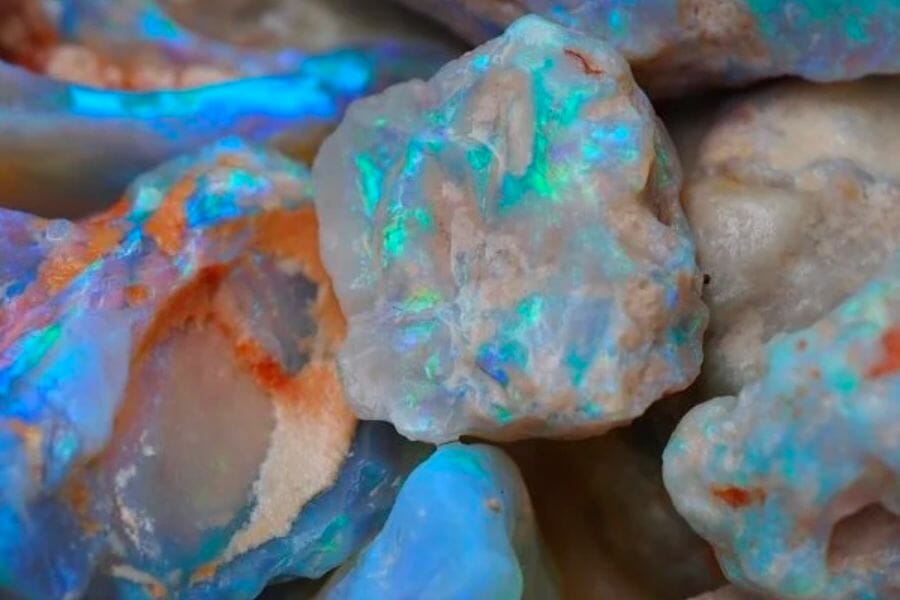
In case you have more time and energy to keep exploring West Virginia beyond our top 5 recommended places to find crystals, just know you won’t run out of amazing places for crystal hunting here. In fact, a handful of the place we’re sharing below are also great sites to find West Virginia geodes.
Where you can find crystals for free in West Virginia
First, here are the free-to-search places here. Plenty of these also offer the best sights in our state. Win-win!
| County | Location |
| Berkeley | County wide in limestone quarries |
| Grant | At abondoned quarry in Petersburg area |
| Greenbrier | In the Acme Limestone County Quarry |
| Hampshire | In gap in Mill Creek Mountain on US 220, the Tonoloway Limestone Quarry |
| Jefferson | At the Howell Zinc prospect in limestone on east bank of the Shenandoah River |
| Mercer | Area quarries of Willowtown |
| Monroe | In both directions along Turkey Creek |
| Morgan | 2 miles north of entrance to Capapon Mountain State park |
| Pendleton | At the German Valley Limestone Company Quarry No. 2 |
| Pocahontas | On the Clover Lick rd. to State Road Commission quarry |
| Randolph | On US-33 at the Paulina Limestone Quarry |
| Tucker | Outcrops of Quartz in Sissaboo Hollow |
| Wetzel | In sandstone exposures along the Ohio River |
Other great places to dig for crystals
Meanwhile, here are additional places to explore if you have extra dimes to spare. The fees these areas require often changes depending on the season, so we recommend calling them first before heading out.
| County | Location |
| Hardy | County wide iron mines |
| Mineral | Area mines of Keyser |
| Monongalia | At the Connellsville Coal Company No. 1 Mine |
The Best Crystal Shops In West Virginia
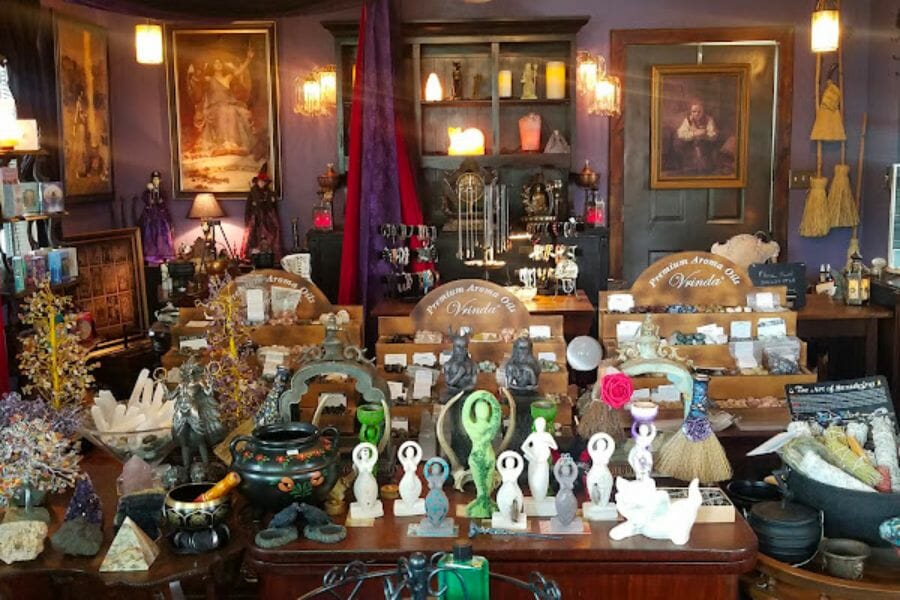
It might get overwhelming having to choose among the many amazing places to visit for your crystal hunting journey. If you prefer a sure way to get your hands on great selections (that comes with paying a certain price, of course!), then you can also visit our local crystal shops. Here are some of the best ones that we have:
- Sky Diamond Healing Crystals – 2708 27th St, Parkersburg, WV 26104
- Earth Magic: Books, Stones, Crystals & Talismans – 3506 University Ave, Morgantown, WV 26505
- Crystal Lotus Shoppe – 89 Olde Main Plaza, St Albans, WV 25177
- The Crystal Path – 1226 4th Ave, Huntington, WV 25701
- Mindful Makings – In the back alley, 1808 7th St Rear, Moundsville, WV 26041
- Barefoot Gypsy – 260 Trenol Rd, Milton, WV 25541
- Dyagon Alley – 24 Bridge St, Wheeling, WV 26003
- Little One Crystal – 903 Wheeling Ave # E, Glen Dale, WV 26038
- Light Touch Healing Arts – 715 3rd Ave, Huntington, WV 25701
- Mystic Raven Co. – 2185 Dupont Rd, Parkersburg, WV 26101
Additional places to find crystals in nearby states
If you’ve already tried all of our recommendations above or are planning a trip out of the state, you should check out our guides for neighboring states:
- Crystals in Ohio
- Crystals in Pennsylvania
- Crystals in Maryland
- Crystals in Virginia
- Crystals in Kentucky
If you have any recommendations we haven’t covered, please leave them in the comments below!

